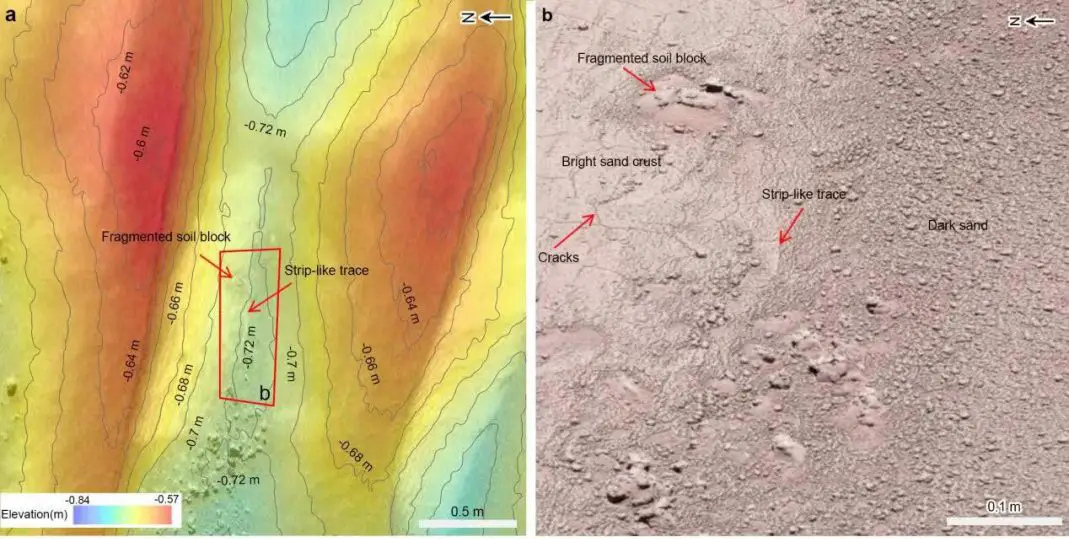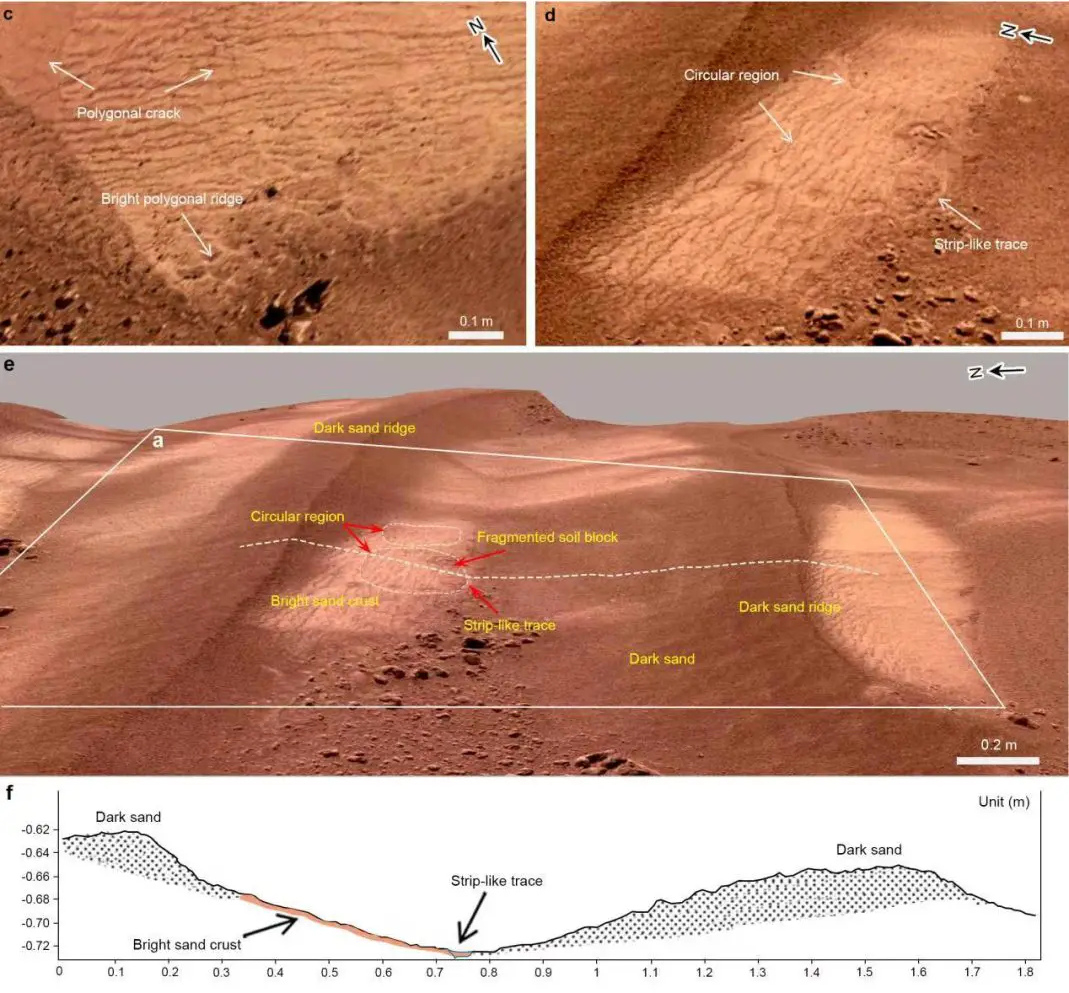
China's Zhurong rover discovers relatively fresh traces of liquid water on Mars
China's Zhuzhong rover, which may no longer be able to continue its mission due to dust accumulated on it, has managed to detect relatively fresh traces of liquid water in the low latitudes of Mars. This indicates that these areas could potentially be inhabited. Moreover, it contradicts previous assumptions that water on Mars can only exist in a solid or gaseous state.
As Scitechdaily.com informs, the discovery was made thanks to the analysis of the morphological characteristics and composition of minerals in the dunes where the rover worked. The evidence for the presence of liquid water was confirmed by an analysis of data from the rover evaluated by the Institute of Geology and Geophysics of the Chinese Academy of Sciences. Other departments of the academy also participated in the study. The results have already been published in the journal Science Advances.

The results of previous studies prove that in the past there was a huge amount of water on Mars, but the climate of the planet changed along with the loss of the atmosphere. As a result, the very low pressure and other factors have made it extremely difficult for liquid water to survive on Mars today. Among scientists, there is a widespread opinion that water on the planet can exist only in solid and gaseous state.
However, droplets on the robotic arm of the Phoenix instrument have shown that salty water can appear at high latitudes during the Martian summer, and simulations have shown that the climatic conditions for the appearance of liquid water can occur temporarily in some regions of Mars, although until recently there was no visible evidence of liquid water at the planet's low latitudes.
The information is supplemented by the discoveries made by Zhurong . As part of the mission to explore Mars, the rover landed on the surface of the planet on May 15, 2021, in the plain of Utopia. With the help of the rover's cameras and sensors, the various properties and composition of the sand dunes in the landing zone were studied. The surface layer of the dunes was found to be rich in hydrated sulfates, hydrated silica, iron oxide minerals, and possibly chlorides.
According to scientists, these characteristics of the dune surface are related to the presence of liquid salt water, which was created by the melting of ice or snow that fell on the salt-bearing surfaces of the dunes. In particular, due to the salt in the dunes, the water maintained its liquid state at low temperatures, and after drying, particles/mineral crusts formed, which later cracked. The water also left other traces on the surface of the dunes, whose age is estimated at 0.4-1.4 million years. Scientists assume that the transport of water vapor from the polar ice sheet once led to the appearance of traces of liquid water on the dunes.

The discoveries of Chinese scientists indicate the existence of liquid water in the lower latitudes of Mars, where it is much warmer than in the upper latitudes. According to Chinese scientists, these discoveries are extremely important for studying the evolution of the Martian climate, finding a suitable environment for life, and receiving important clues in the future search for life.
- Related News
- TAO Observatory: World's highest telescope to study evolution of galaxies and exoplanets
- Powerful M9.5 solar flare causes radio blackout in Pacific Ocean
- What will happen to the Earth if the Moon disappears?
- Key to conquering the Red Planet: Why is NASA studying solar storms on Mars?
- James Webb captures never-before-seen details of Horsehead Nebula (photos)
- Is there a ninth planet in the solar system? Scientists find new evidence
- Most read
month
week
day
- 10 most interesting architectural works of Zaha Hadid 859
- Alphabet will pay dividends for the first time in its history 842
- Google is developing a budget smartwatch 808
- Large taxpayers of Armenia’s IT sector: What changes have taken place in 2024 Q1? 747
- iPhone users can now login into WhatsApp without password 730
- Insider shows mockups of all 4 iPhone 16 models 702
- Digital Julfa Network is launching a pan-Armenian centre in the metaverse, on the Fastexverse virtual platform 683
- 8800 mAh battery, 2.4K IPS screen, thermal imager: Blackview has introduced a new ultra-durable smartphone 644
- iPhone sales in China drop by about 20%: What is the reason? 621
- Sparkles: Boston Dynamics unveils a furry robot dog that can dance (video) 615
- Archive
